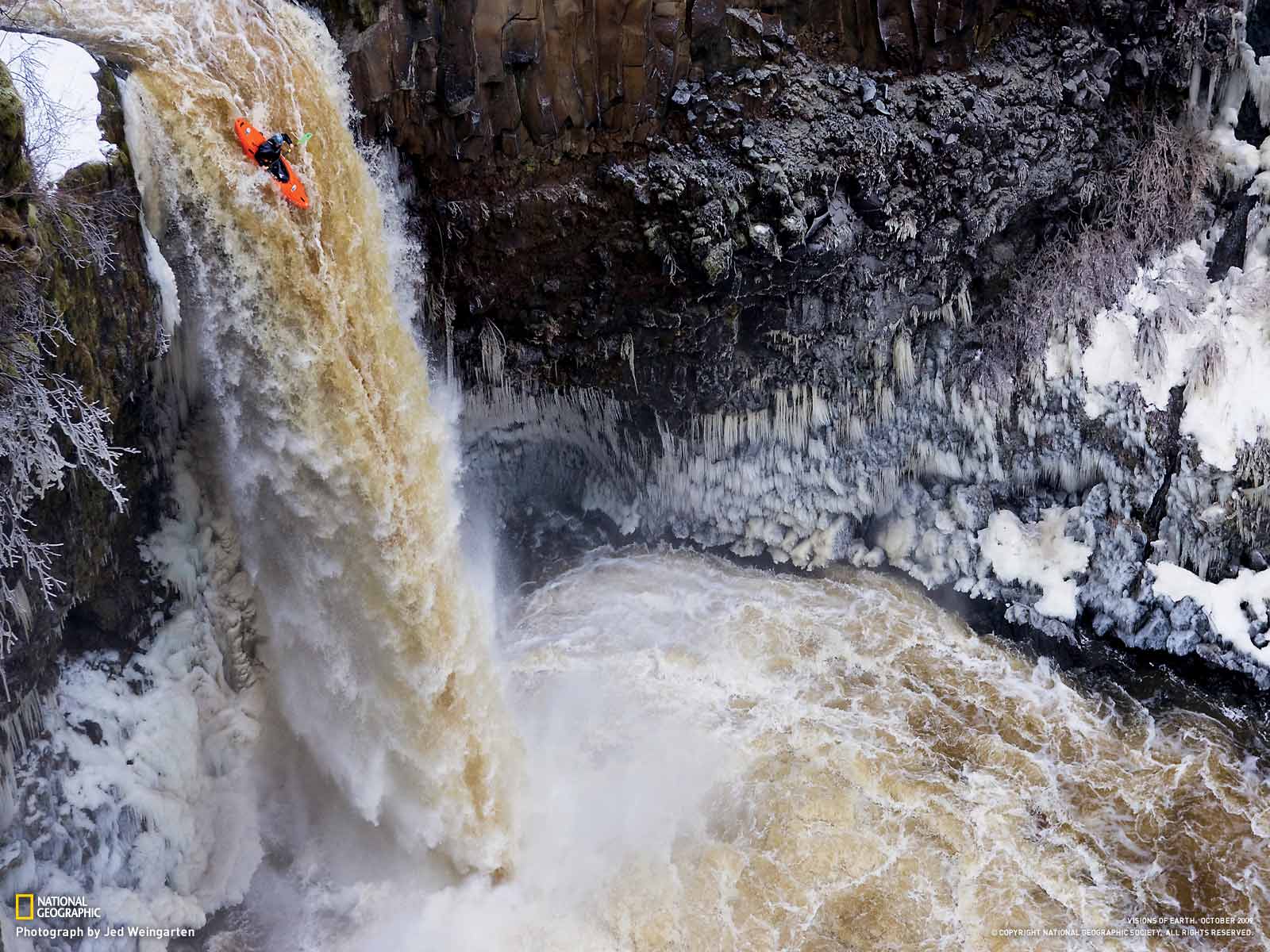The Boof
Boof is not only a fun word to say, but it is also a
technique that is necessary for upper level kayaking. As
discussed in the freshwater section, holes and waves can
be very dangerous if caught in upside down, but these
features are also unavoidable on the river and are the
reason paddlers spend thousands of dollars on equipment.
Whitewater kayaks have a very flat or rockered bottom.
This allows the kayak to plane over turbulent water
without betting pulled or thrown off course. But once the
bow of the boat submerges in the water it can be flipped
and sucked into a hole.
 |
|
|
| This is a great example of a
boof off a fall. The paddler uses his paddle to
push himself off the lip of the fall and project
himself past the aerated water directly
underneath. Projectile motion is a calculation all kayakers must make when approaching the lip of a drop. Sometimes the drop is too big to boof. In these cases the paddlers wants to enter the foam pile at the bottom of the fall with their boat straight up and down. this allows them to pierce the water and reduce impact. |
 |